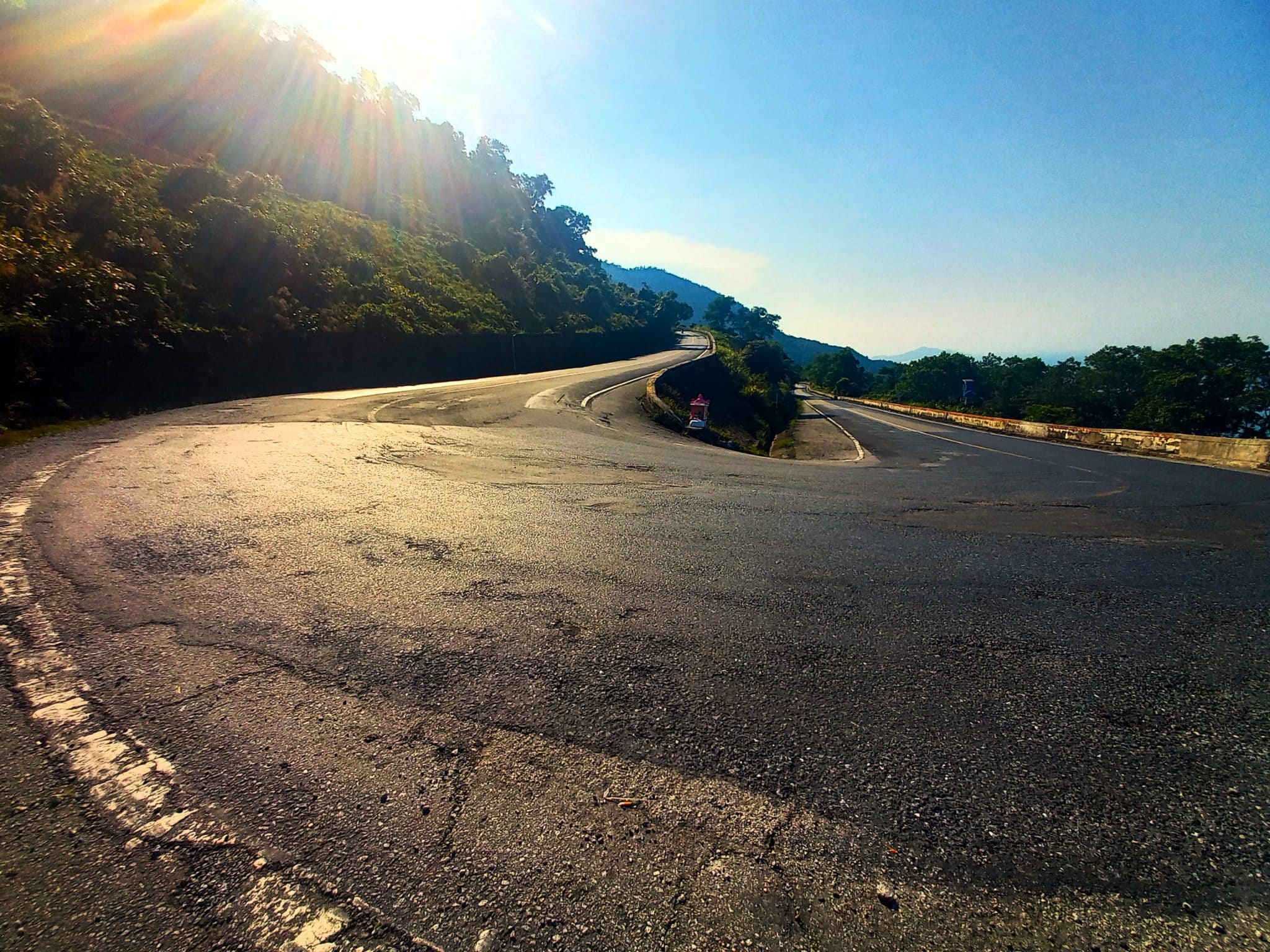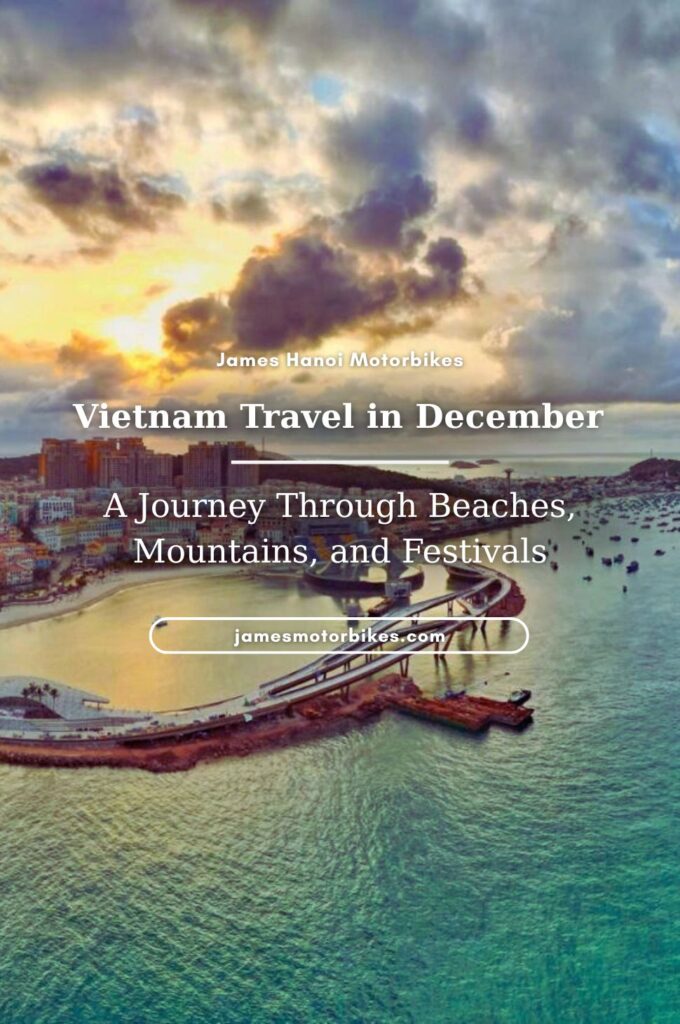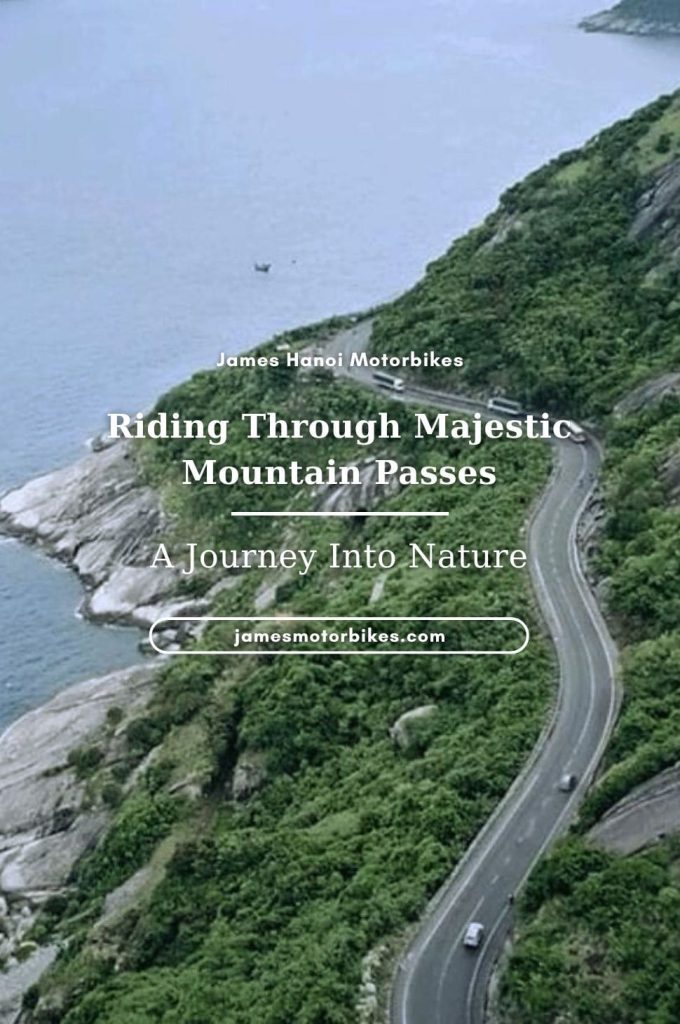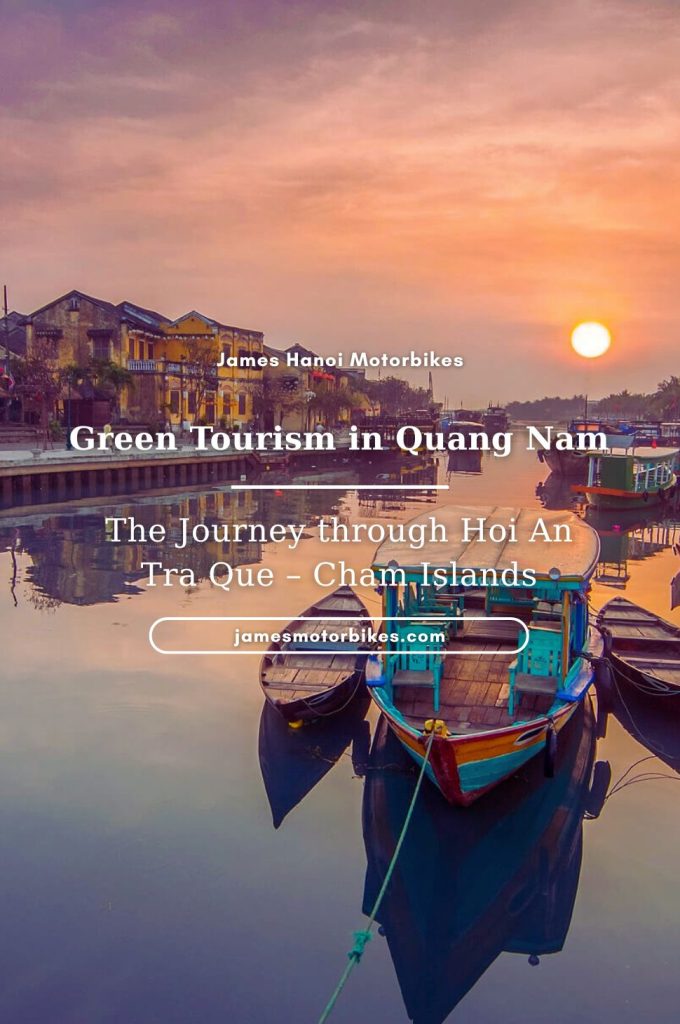A contender for the most famous road in Vietnam, the Hai Van Pass is a short but scenic route that curls around a mountainous spur above the East Sea on the central coast. For thousands of years, Đèo Hải Vân – ‘Ocean Cloud Pass’ – has acted as a geographic and political boundary separating ancient kingdoms, a climatic divide between the tropical south and the subtropical north, and a strategic military post during times of war. But today, the Hải Vân Pass is best known as a great road trip linking the popular central Vietnamese cities of Hội An, Đà Nẵng, and Huế. For many road-trippers, the Hải Vân Pass is a favourite ride, its popularity bolstered by the success of the Top Gear Vietnam Special (2008), in which the presenters waxed lyrical about the pass, inspiring a generation of travellers to hit the road and head there. The Hải Vân Pass is fun to ride, with excellent views, light traffic, and easy access from several cities.

HAI VAN PASS MOTORBIKE GUIDE
One of the Most Famous Roads in Vietnam
This guide includes a detailed route map outlining the best, most scenic way to ride the Hai Van Pass between the central cities of Hội An, Đà Nẵng, and Huế. I’ve also written an overview of the route with details such as weather, time of year, duration and distance, a description of the ride including historical commentary, and recommendations for accommodation and food and drink along the way. The Hải Vân Pass is a memorable, beautiful and highly enjoyable road trip. What’s more, it is one of the most accessible and easily rideable routes in Vietnam.
Route Map:
Hai Van Pass | Hội An→Đà Nẵng→Huế
Blue Line: best route | Brown Line: fast route | Red Lines: side routes

Overview & Details:
Below is a brief overview of the Hai Van Pass route, followed by more specific details about important considerations, such as weather conditions, route options, duration, motorbike rental and more:
QUICK DETAILS:
- Route: scenic coastal route linking Hội An, Đà Nẵng & Huế via the Hai Van Pass [MAP]
- Distance: 165km/130km (best route/fast route)
- Duration: 1-3 days (one-way/roundtrip)
- Scenery: superb ocean vistas, lagoons, beaches, verdant valleys, waterfalls & backcountry
- Attractions: magnificent landscapes, good riding, historic & cultural sites, waterfalls, seafood
- Road Conditions: good, smooth conditions, wide highways & paved back-roads, light traffic
- Best Time: March-September

ABOUT THE ROUTE:
Route Options: The best way to enjoy the Hai Van Pass is to ride all the way between Hội An/Đà Nẵng and Huế via a scenic backroads route, which includes the pass but avoids horrible Highway QL1A completely: this is the blue line on my map. Alternatively, riders can take the fast route via the highway, which still includes the pass but is far less scenic: this is the brown line on my map.
Distances: The total distance of the scenic route between Hội An, Đà Nẵng, and Huế is 165km one-way (the blue line on my map). The total distance of the fast route is 130km one-way (the brown line on my map).
Duration: One full day is ideal for riding the Hai Van Pass in one direction on the blue route on my map, including lots of stops for photos, refreshments and activities. But, it’s even more rewarding to ride the Hải Vân Pass as a roundtrip with one or two nights spent in either Hội An, Đà Nẵng or Huế, where there are good accommodation options. In other words: 1 day for one-way; 2-3 days for a roundtrip.
Side Routes: There are lots of optional side routes to beaches, waterfalls and viewpoints on the Hai Van Pass route: see the red lines on my map. One of the side routes is riding the scenic back-roads on Sơn Trà Peninsula near Đà Nẵng, but bear in mind this would add a least a couple of hours to your journey.
Motorbike Rental: Renting motorbikes from any of the three major cities on the route – Hội An, Đà Nẫng, and Huế – should be fairly easy. Some rental companies even offer one-way pick-up and drop-off services, allowing customers to ride in one direction without having to return to their starting point to give their bike back. I recommend contacting Style Motorbikes, Rent A Bike (RAB), and Tigit Motorbikes.
Weather & Time of Year: Although the Hai Van Pass is rideable at any time of year, the best months for good weather and conditions are March to September. At other times, the pass might be covered in cloud and very wet.
Connecting Routes: The Hai Van Pass can be ridden as part of a wider route in the region, called the Golden Loop. Another option is to continue north via the Tomb Rider route or south along the Coast Road. For more connecting routes and road trips, see Related Routes.


The Best Route:
Hội An→Đà Nẵng→Huế via the Scenic Route|165km
[View Map]
By far the best way to enjoy and experience the Hai Van Pass is to ride the scenic route (the blue line on my map) all the way from Hội An or Đà Nẵng to Huế, either one-way or return. I’ve written the following outline going from south to north, starting in Hội An, via Đà Nẵng, to the Hải Vân Pass, and ending in Huế. However, you can ride this route in the opposite direction: it makes no difference.
Leave Hội An’s old town in the morning – the earlier the better if you want to make it all the way to Huế in one day. Take the coast road (Lạc Long Quân/Nguyên Giáp street) to Đà Nẵng, stretching all the way from Cửa Đại Beach, past An Bang Beach, and the Marble Mountains, to Đà Nẵng’s Municipal Beach, once known to American marines as ‘China Beach’. (If you have time, take the scenic Sơn Trà Peninsula side route – the red line on my map. But bear in mind that this detour will take a least a couple of hours.)
From Đà Nẵng’s beach, turn west onto the famous Dragon Bridge across the Hàn River and into the city centre. Cruise along the river bank before turning onto Nguyễn Tất Thành street skirting the ocean along Nam Ô Beach. At the end of the beach road, turn onto the broad lanes of Highway QL1A for a brief stretch before the road starts to climb into foliage: this is the start of the Hải Vân Pass.


Curling around the mountainside, the pass opens up spectacular views across Đà Nẵng Bay. Several selfie cafes are setup on the roadside with photo viewpoints on giant boulders looking over the bay. At the top of the pass, a collection of overpriced food and drink shacks vie for your custom. The Nguyễn Dynasty gate and old gun towers are located across the road, offering good viewing points and short, pleasant walks. However, they were under renovation at the time of research (2023). On either side of the top of the pass, small paved lanes and dirt tracks lead down the slopes towards the sea, ending at beaches such as Bãi Chuối. These are good side routes (see the red lines on my map) if you have a hour or two to spare. However, be aware that you may be stopped from continuing down some side routes due to military presence in the area.



Snaking down the other side of the pass, the views get even better: looking over the winding asphalt as it drops towards the long, empty beach of Lăng Cô. Just after one of the last hairpin bends of the pass, a much-photographed scene opens up over Lăng Cô Bay and fishing village, with a long bridge over the water (the exit of the Hải Vân Tunnel) and the lush, misty mountains behind. This might as well be known as the Top Gear View Point, as it was here that the final scene on the Hai Van Pass from the Vietnam Special episode (2008) was filmed, with the three co-presenters all gazing at the sunset, enraptured by the beauty of Vietnam’s landscape.


At the bottom of the pass, don’t cross over the bridge to Lăng Cô: instead, continue due west on the lakeside road hugging the shores of Lập An Lagoon. This beautiful, empty road skirts the water’s edge with two optional detours to waterfalls (Thác Đỏ and Suối Mơ Hói Mít) before joining Highway QL1A at the northernmost shore.
Backtrack on Highway QL1A for about 30 seconds before veering off due north on the Chân Mây road toward Cảnh Dương Beach. The road stays close to the coast, where there are several backpacker campgrounds and high-end resorts (see Accommodation). A nice backroad leads over a bridge across the Bu Lu River eventually reconnecting with Highway QL1A again at the Phước Tượng Tunnel & Pass. Just after exiting the tunnel, turn off the highway onto Road QL49B, heading north along the shores of the Cầu Hai Lagoon.


Recently upgraded, QL49B crosses a bridge at the mouth of the lagoon and turns west onto a long peninsula towards Thuận An. This route is notable for the thousands of elaborately carved family tombs, which are scattered across the sandy banks between the road and the sea. Backroads weave through the tombs around the area known as the City of Ghosts. At Thuận An village and beach, turn south across a bridge and follow the Phổ Lợi and Perfume rivers into the heart of the former imperial city of Huế.


Understanding the Pass:
Historical Background & Why the Pass is So Famous
On days when vapour from the East Sea rises into the forests and clings to the mountaintops, Đèo Hải Vân (Ocean Cloud Pass) lives up to its poetic name. But, despite its romantic title, the Hải Vân Pass has always been something of a frontier: a boundary of kingdoms and climate; often fought over, sometimes tragic but never losing its ability to inspire awe.
During the ‘American War’, the Hải Vân Pass was known as the ‘Street Without Joy’. Back then, the pass connected the two war-scarred cities of Huế and Đà Nẵng via the dangerous and hotly contested Highway 1. Thanks to a tunnel under the mountains, completed in 2005, the Hải Vân Pass today is the ‘Street Without Traffic’. The majority of transport now takes the tunnel, which leaves the Hải Vân Pass – one of the most scenic coastal roads in Vietnam – to two-wheeled vehicles and the occasional oil truck (both of which are not allowed through the tunnel). This makes the spectacular Hải Vân Pass perfect for a relatively easy, safe and short motorbike road trip between the popular tourist spots of Hội An/Đà Nẵng to the south and Huế to the north.


The Hải Vân Pass is a natural wall: a mountainous finger of land jutting into the East Sea. This is an east-west spur of the Trường Sơn (Annamite) Range that runs north to south along the western spine of Vietnam. For centuries this natural barrier represented the limit of one kingdom and the beginning of another. The Hindu Kingdom of Champa resided south of the Hải Vân Pass, while the Confucian-Buddhist Kingdom of Đại Việt was to the north. The two kingdoms fought regularly to control land either side of the pass. The Cham pushed as far north as the Đại Việt capital of Thăng Long (Hanoi) in 1371. Partly due to the favourable climate and fertility of the land south of the Hải Vân Pass, the Cham in this area were known as the ‘Coconut Palm Group’. The Hải Vân Pass sheltered the Cham from strong, cold winds and storms that blew from the north. Known as ‘Chinese Winds’, these still ravage territory north of the pass each year during the ‘typhoon months’, which are usually around September and October.


The good climatic conditions south of the Hải Vân Pass helped to build the Cham civilization, which lasted for more than a thousand years, from the 3rd century onwards. It was the lure of the land of the ‘Coconut Palm Cham’ that led to its eventual conquest. Đại Việt, to the north of the Hải Vân Pass, was growing steadily thanks to liberation from Chinese rule in 938 followed by two strong imperial dynasties, the Lý (1009-1225) and the Trần (1225-1400). Agricultural productivity and population were on the rise, but unpredictable weather and devastating flooding in the Red River Delta was a constant threat to stability. With China looming large over their northern borders, Đại Việt looked to the south for more land and a better climate for their growing population. After centuries of fighting, it was the Lê Dynasty who finally defeated the Cham, in 1471, annexing the sunny territory south of the Hải Vân Pass for Đại Việt. The ruins of the Cham temples at Mỹ Sơn, near Hội An, can still be seen today, as can many other Cham ruins.


The appeal of the land of the ‘Coconut Palm Cham’ is still obvious today. If travelling from north to south, heading out of Huế on a wet, grey February morning and driving up the Hải Vân Pass in thick, moisture-laden cloud, when you arrive at the top and look down on the sun-filled Bay of Đà Nẵng to the south, it’s easy to imagine how attractive these lands must have been to the Đại Việt from the north. Curling your way up the switchbacks and hairpin bends, the motorbike engine struggling to deal with the gradient, and then rolling down the other side, wondering if the brake pads will wear away before you reach the bottom, it’s also apparent how the pass could have separated two civilizations for so long.


Whatever the weather, the Hải Vân Pass is always a scenic route. As with other great views, the pass has often inspired wonder, sometimes in the most unlikely of contexts and least likely of people. When Paul Theroux was passing through Vietnam during his Great Railway Bazaar, in 1973, the Paris Peace Accords had only recently been signed by the United States, South and North Vietnam. Direct American military participation in Vietnam was officially over, but the war still had two more long years before the fall of Saigon. As most of the Trans-Indochinois Railway (now the Reunification Express) that linked Hanoi with Saigon had been blown up, Theroux was only able to travel on short sections of the line that were deemed safe. Fortunately for him one of these safe sections was between Huế and Đà Nẵng.
At that time, Huế was a ruin. Having been pounded for years, not least during the Tet Offensive in 1968, the city was all mud and rubble. Đà Nẵng, formerly a massive American military base, was, according to Theroux, “a poisoned city”. But the landscape between these two wounded cities, including the Hải Vân Pass which the railway snakes around just below the road, was still majestic. Perhaps because of the juxtaposition between the ugly urban destruction in Huế and the rural peace and beauty around the Hải Vân Pass, Theroux, having travelled across Europe, the Middle East and the Indian subcontinent by train, was amazed by what he saw from his compartment on the Trans-Indochinois:
“Of all the places the railway had taken me since London, this was the loveliest.
Beyond the leaping jade plates of the sea was an overhang of cliffs and the sight of a valley so large it contained sun, smoke, rain and cloud – all at once.
I had been unprepared for this beauty; it surprised and humbled me.
Who has mentioned the simple fact that the heights of Vietnam are places of unimaginable grandeur?”


35 years later, Jeremy Clarkson, former presenter of the popular BBC car show, Top Gear, had a similar reaction to the landscape around the Hải Vân Pass. Famously sarcastic and not one to be easily moved – except by a good car – Clarkson and his co-presenters couldn’t help but be awed by the green mountains rolling down in pleats and folds toward the East Sea. On this strip of tarmac, that he proclaimed “one of the best coast roads in the world”, Clarkson began to enjoy motorbiking. Indeed, the Top Gear Vietnam Special has surely inspired thousands of travellers to follow in their tyre-tracks.
Like other borders and frontiers, the Hải Vân Pass has seen its fair share of blood and battles. At the top of the pass, by the brick gate built by Emperor Minh Mạng in the 19th century, are gun towers that were used by French, South Vietnamese and American lookouts respectively, during the long wars from 1946-1975. More recent reminders of tragedy on the pass are the small shrines lining the road that mark the sites of fatal accidents. (Note: most of these date from before the tunnel was built, when the pass was far more dangerous than it is today). As with many famous battle fields and scenic roads in Vietnam, tragedy contrasts sharply with the natural beauty of the surrounds.

As for me, I’ve always thought of the Hải Vân Pass as a point of transition: both a boundary and a gate. When riding from south to north, the pass is the point at which I feel I’ve entered more unfamiliar territory. The clouds usually close-in and fierce rain pinches the skin on my face. With this comes a sense of adventure. Being from the south in both my native and adopted countries (London in Britain, Saigon in Vietnam), I’ve long associated travelling north with going into higher, wilder landscape and colder climes. Likewise, when I travel from north to south, the Hải Vân Pass is the point at which I feel I’ve arrived ‘home’ again, safe in the land of the ‘Coconut Palm Cham’ and the warmth of the tropical climate I’ve become accustomed to.
Located on the 16th parallel, just one south of the infamous 17th parallel that once divided the nation politically, the Hải Vân Pass is a permanent natural boundary that will always divide the nation climatically, between tropical and sub-tropical. The ‘Ocean Cloud’ clings to the pass, but this 30km stretch of road is beautiful in any weather, and each time I ride it, in either direction, there’s always the sense of having crossed a barrier.

Accommodation:
Where to Stay when Riding the Hải Vân Pass Route
Although there’s no accommodation on the Hải Vân Pass itself, there are a handful of places to stay along the route, as well as an enormous variety of hotels and resorts in all price ranges at either end of the route: in Hội An, Đà Nẵng, and Huế:

Hotels on the Route:
In many of the small towns along the way, you’ll find nhà nghỉ (local guesthouses) lining the road, particularly around Lăng Cô and Cảnh Dương beaches. Ngọc Hằng is a good guesthouse in Lăng Cô and Lăng Cô Beach Resort is a mid-range accommodation on the beach. Cảnh Dương Beach Camping offers a night under canvas on the beach or Tân Cảnh Guesthouse is close by. There are also some luxury accommodations along the route which you can stop at for a night or two to break the journey in style. These include Bayan Tree, an ultra luxurious resort, and Vedana Lagoon, a more affordable option with atmospheric rooms on the lake or hillside.

Hotels in Hội An:
The popular tourist town of Hội An probably has the best-value and range of hotels anywhere in Vietnam. The sheer volume of accommodation options and the enduring popularity of Hội An as a travel destination drives prices down and quality up. For budget accommodation check out the cheap but clean and classy rooms at Kiman Hotel, and Vietnam Backpackers Hostel. An excellent-value mid-range place to stay is Lasenta Boutique. For luxury it’s hard to beat the Anantara in the old town or Victoria Resort on the beach. Besides these recommendations there are hundreds more to choose from, which you can browse and book on this page.

Hotels in Đà Nẵng:
These days, the riverfront and the seafront of Đà Nẵng are packed with accommodation options, from budget mini-hotels and hostels to fancy 5-star monoliths with rooftop infinity pools. The choice is bewildering, but also strangely generic. Unlike the classy and characterful hotels of Hội An, Đà Nẵng tends to have rather bland, business-like accommodation. Nonetheless, there’s lots to choose from and book on this page. I have stayed at and reviewed the Four Points by Sheraton, a beachfront high-rise property, and Brilliant Hotel, a glass-fronted mid-range accommodation on the Hàn Riverfront. Two cheap and funky shipping-container-based hostels are Rom Casa and Đà Nẵng Container Hotel, both are near the beach.

Hotels in Huế:
One of the most charming, historic and underappreciated cities in Vietnam, Huế is a great place to overnight while riding the Hải Vân Pass route. There’s lots of accommodation available that you can browse and book on this page. My personal recommendations are Villa Huế, an exceptionally good-value mid-range hotel, Hue Backpackers Hostel which is cheap, fun and centrally located, and Azerai La Residence, one of Vietnam’s best-known heritage hotels. In addition, there are some great hotels in more rural locations outside the city centre, such as Pilgrimage Village near the royal tombs and Villa Louise on the beach.

Food & Drink:
What to Eat & Drink along the Hải Vân Pass Route
Central Vietnam offers some of the nation’s best cuisine, especially local delicacies in Hội An and Huế, and seafood in Đà Nẵng and Lăng Cô. I have only marked a few specific places on my map: the best thing to do is to look for signs outside street vendors, local eateries and on restaurant menus for popular regional dishes, such as mì quảng, cao lầu, bún bò Huế, cơm hến, bánh bèo and many, many more besides. (Check out the Huế Food Guide for specific recommendations.) For seafood (hải sản), the beachside local eateries in Lăng Cô, such as Biển Ngọc and the floating restaurants in the lagoon, and those on Cảnh Dương beach, are superb.



All three major towns on the route – Hội An, Đà Nẵng, and Huế – have exciting cafe scenes, with excellent coffee shops serving great coffee using local beans. There’s also a thriving craft beer culture in the three cities using local ingredients and flavours. (See Drinking & Nightlife in Huế.) In addition, Đà Nẵng has many rooftop bars, such as Horizon on the top floor of Four Points. On the Hải Vân Pass itself there are dozens of roadside cafes. These are less about the drinks, and more about the fabulous views and selfie opportunities, particularly the boulder viewpoint cafes.



Source of the article: Vietnam Coracle








